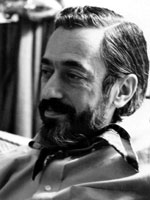 Seymour Reit. From Robin Synder’s History of Comics 1992 fanzine, Seymour Reit wrote, “Way, way back in 1939, after graduating N.Y.U. (believe it or not, Class of ’38!) I went to Miami to take a job as an inker at Fleischer Studios. The big project at that time was our feature length animated film Gulliver’s Travels (1939). I worked on Gulliver, also on film shorts of Popeye and (I vaguely remember) a few Betty Boops, which were rapidly phasing out. I went from inking to doing in-betweening and from there to the story department.
Seymour Reit. From Robin Synder’s History of Comics 1992 fanzine, Seymour Reit wrote, “Way, way back in 1939, after graduating N.Y.U. (believe it or not, Class of ’38!) I went to Miami to take a job as an inker at Fleischer Studios. The big project at that time was our feature length animated film Gulliver’s Travels (1939). I worked on Gulliver, also on film shorts of Popeye and (I vaguely remember) a few Betty Boops, which were rapidly phasing out. I went from inking to doing in-betweening and from there to the story department.
“At that time, Fleischer paid a few bucks for Popeye jokes submitted speculatively by the staff. People also tried their hands at writing short stories for use in the series called Fable Toons. One weekend I wrote a three to four page story I titled ‘Casper, the Friendly Ghost’. The story was mine – every last word. Shortly after, I gave it to Joe Oriolo who wanted to develop the visuals and perhaps peddle it either to the studio or to a childrens’ book publisher.
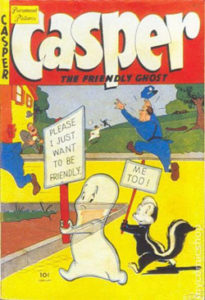 “By that point Gulliver was finished, the studio was in hock to Paramount Pictures and many of the 600 artists (including me) started drifting north again, out of jobs. Then along came Pearl Harbor and World War II. Am proud to say I went into the army in a camouflage unit. I came out of the Air Force after VE Day with a Captaincy and a decoration.
“By that point Gulliver was finished, the studio was in hock to Paramount Pictures and many of the 600 artists (including me) started drifting north again, out of jobs. Then along came Pearl Harbor and World War II. Am proud to say I went into the army in a camouflage unit. I came out of the Air Force after VE Day with a Captaincy and a decoration.
“In the interim, Joe had created the Casper drawing and sold both the story and cartoon concept to Fleischer’s. The first film used my story word-for-word as a voice over. Joe and I did a children’s book on another subject entirely, but the Casper series was based on a definite collaboration between my script and Joe’s artwork. Joe and I worked together subsequently but over the years he may have forgotten or overlooked the true origins of our lovely little character.
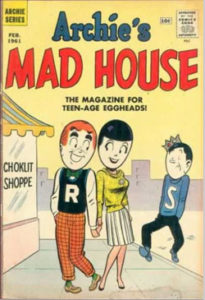 “Nevertheless he was a good artist and a top animation director and did a lot toward making the Casper series successful. I also, by the way, worked on many subsequent Casper stories, contributing gags, dialogue, etc. The little ghost went on to fame but by then neither Joe nor I had any financial stake in it.”
“Nevertheless he was a good artist and a top animation director and did a lot toward making the Casper series successful. I also, by the way, worked on many subsequent Casper stories, contributing gags, dialogue, etc. The little ghost went on to fame but by then neither Joe nor I had any financial stake in it.”
Reit then began writing comic books for D.C. “I never had much success with the super-hero types – my ‘forte’ was humor and pudgy bunnies.” And then worked at Archie Comics under both Harry Shorten and then Richard Goldwater. “I remember starting Life With Archie, Archie’s Madhouse and Archie’s Joke Book.” In comics, Reit also worked on Mighty Mouse (Archer St. John version), Dean Martin and Jerry Lewis, I Love Lucy and Rudolph the Red-Nosed Reindeer. “Also filled in on occasional Little Lulu and Tubby – those were the most fun of all!”
For about eight years he wrote Harry Shorten’s syndicated newpaper cartoon There Oughta Be a Law with artwork by Warren Whipple. He then started contributing to MAD magazine with issue 46 (April 1959).
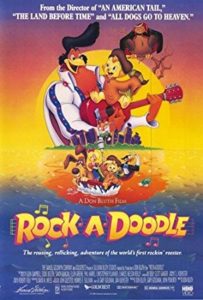 Don Bluth and Snow White. In the L.A. Daily News April 2, 1992, animator and producer Don Bluth stated, “Snow White and the Seven Dwarfs (1937) wasn’t of this world. It existed only when you walked into the movie theater. Even then, I wanted to help do that.”
Don Bluth and Snow White. In the L.A. Daily News April 2, 1992, animator and producer Don Bluth stated, “Snow White and the Seven Dwarfs (1937) wasn’t of this world. It existed only when you walked into the movie theater. Even then, I wanted to help do that.”
Rock-A-Doodle Elvis. In L.A. Daily News April 2, 1992, animator and producer Don Bluth talked about his latest animated feature Rock-A-Doodle (1991): “(Singer) Glen Campbell came in and did the initial thrust of the character (Chanticleer). Then we animated a little bit of it. ‘Wait a minute; that’s turning out differently than we thought’. So we called him back. Originally he wasn’t going to mimic (Elvis Presley).
“In fact, we were very shy about asking him to do that. But once he heard the music, he started laughing and we didn’t know how he was going to take this, but he stepped to the mike. He suddenly did Elvis. I think he did it just because it was a hoot. And then he said, ‘The Jordanaires (Presley’s sometime backup group) are in town; let’s bring ‘em in and have them sing backup’.”
 Katzenberg on Beauty and the Beast. From the New York Times November 17, 1991, Jeffrey Katzenberg said about Disney’s Beauty and the Beast (1991): “The casting of an animated picture is not unlike the casting of a live-action movie. You have to have the right actor to play Beast and Belle. And when I say actor, I’m not referring to the voice. I’m referring to the animator. In animation, these people are our movie stars. Glen (Keane) is our Kevin Costner, our Tom Cruise.
Katzenberg on Beauty and the Beast. From the New York Times November 17, 1991, Jeffrey Katzenberg said about Disney’s Beauty and the Beast (1991): “The casting of an animated picture is not unlike the casting of a live-action movie. You have to have the right actor to play Beast and Belle. And when I say actor, I’m not referring to the voice. I’m referring to the animator. In animation, these people are our movie stars. Glen (Keane) is our Kevin Costner, our Tom Cruise.
 “The style and the look and the animation of the movie have to elevate it to someplace that makes it really dazzling. The most important thing that happens is when she (Belle) takes (the Beast’s) paw and puts her arm over his shoulder. You must feel at that moment when they touch and when they look into each other’s eyes that this star has exploded somewhere out there and is shining down. I know when that moment happens and that lyric comes on, it had better be magic and send a shiver down your spine – that’s what we have to go for.”
“The style and the look and the animation of the movie have to elevate it to someplace that makes it really dazzling. The most important thing that happens is when she (Belle) takes (the Beast’s) paw and puts her arm over his shoulder. You must feel at that moment when they touch and when they look into each other’s eyes that this star has exploded somewhere out there and is shining down. I know when that moment happens and that lyric comes on, it had better be magic and send a shiver down your spine – that’s what we have to go for.”
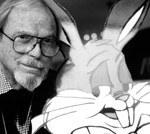 Not Average. In the Orange County Register October 22, 1989, animator and producer Chuck Jones said, “The integrity of the work was always most important to me. My characters are alive. They live within me, and I can’t think of them in any other way. I know that sounds a little strange and if that’s the way people think of me, then fine. But there’s a difference between normal and average. I’m not average. I’m normal…for me.”
Not Average. In the Orange County Register October 22, 1989, animator and producer Chuck Jones said, “The integrity of the work was always most important to me. My characters are alive. They live within me, and I can’t think of them in any other way. I know that sounds a little strange and if that’s the way people think of me, then fine. But there’s a difference between normal and average. I’m not average. I’m normal…for me.”
Hamill’s Joker. From the Winnipeg Sun Preview for July 25, 1993, Alan Burnett who was the producer and story editor for Batman: The Animated Series said, “We’re all comic book fans here. Most of us are 30-something on this staff and we try to please ourselves. We’ve gotten Mark Hamill to do the Joker and he’s going to end up being the definitive Joker voice. He’s amazing. He puts a lot of energy into it. He doesn’t sit like most of the actors do. He stands up and he’s really acting out the part right in front of the microphone. There are times in the recording when you’re thinking ‘how can his voice laugh this strongly over and over again?’ He’s just a great actor, pure and simple.”
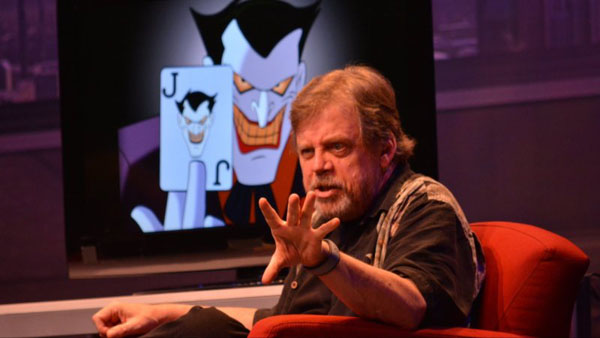


 Jim Korkis is an internationally respected animation historian who in recent years has devoted his attention to the many worlds of Disney. He was a columnist for a variety of animation magazines. With his former writing partner, John Cawley, he authored several animation related books including The Encyclopedia of Cartoon Superstars, How to Create Animation, Cartoon Confidential and Get Animated’s Animation Art Buyer’s Guide. He taught animation classes at the Disney Institute in Florida as well as instructing classes on acting and animation history for Disney Feature Animation: Florida.
Jim Korkis is an internationally respected animation historian who in recent years has devoted his attention to the many worlds of Disney. He was a columnist for a variety of animation magazines. With his former writing partner, John Cawley, he authored several animation related books including The Encyclopedia of Cartoon Superstars, How to Create Animation, Cartoon Confidential and Get Animated’s Animation Art Buyer’s Guide. He taught animation classes at the Disney Institute in Florida as well as instructing classes on acting and animation history for Disney Feature Animation: Florida.




















































“And when I say actor, I’m not referring to the voice. I’m referring to the animator. In animation, these people are our movie stars.” (Jeffrey Katzenberg)
There you have it, folks. Every feature animator should tear out that quote and sue for equal billing on all promotional materials. And commensurate pay. Why is the name Glen Keane not as familiar to the public as that of some movie star who spent a couple of pleasant afternoons in a sound booth doing voices? Time for a revolution!